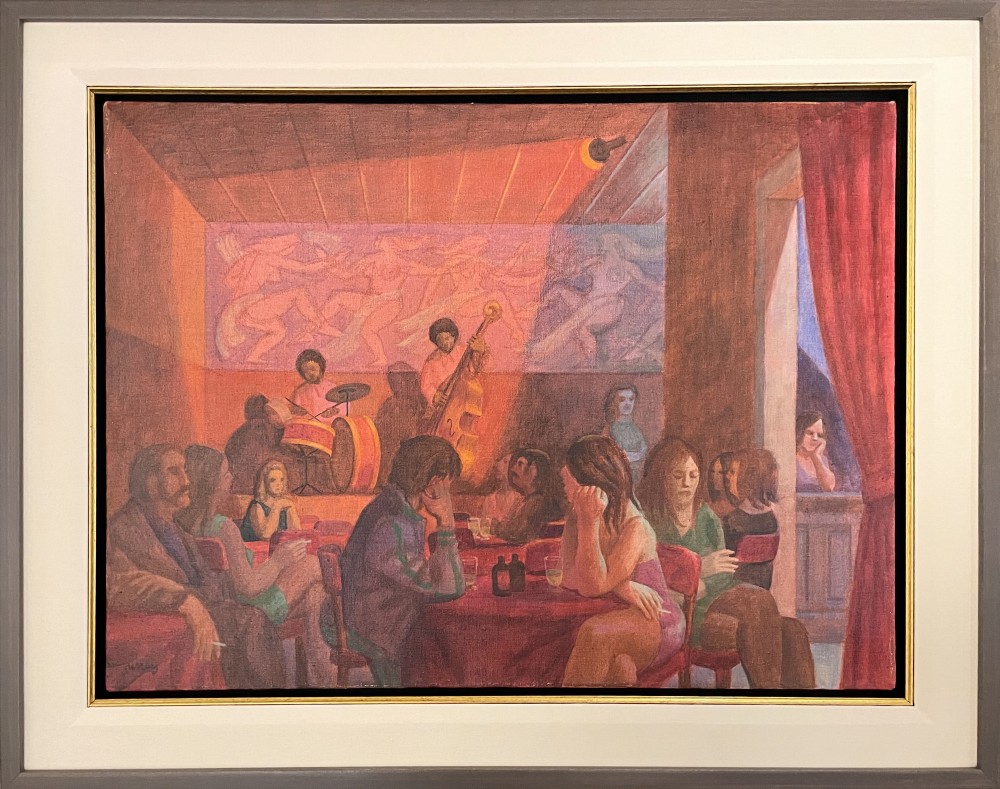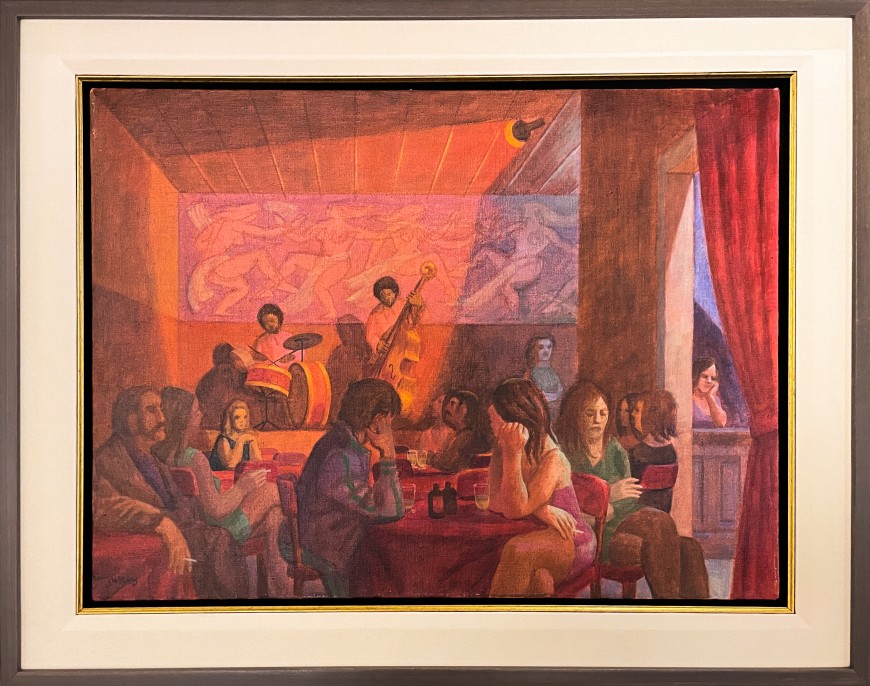-
Artworks
Philip SurreyLe Café La Bohème, 19721910-1990Oil on canvas18 x 24 in
45.7 x 61 cmSoldInscriptions
signed, 'Surrey' (lower left)Provenance
Galerie Gilles Corbeil, Montreal;
Acquired from the above, private collection, Montreal, January 19, 1972.
Exhibitions
Galerie Walter Klinkhoff, Montreal, Philip Surrey Retrospective Exhibition, September 18- October 2, 2004, no. 9.Café la Bohème was one of Montreal’s famous jazz clubs. Jazz fans will recall some of the other iconic clubs, Rockhead’s Paradise, Biddles and the Black Bottom. Surrey painted a number of compositions of bars, taverns and clubs. What is of particular note in this composition is that there is no engagement among the patrons, one to another. That is to say, even in this vignette of perhaps 8 tables, there is no eye contact, many simply looking …. somewhere. Even in the most intimate of spaces, Surrey captures a sense of loneliness in the city.
_____________________________________
Philip Surrey’s world is one of intrigue and mystery. The allure of the unknown titillates the viewer. Looking at his paintings, one asks oneself, “What happens next?” Fully 75 years ago, reviewing Surrey’s first solo exhibition for the Montreal Standard, Robert Ayre wrote of Surrey’s paintings, “.... haunted… the loneliness and secrecy of the night …. Created by still posed compositions, by somber colours, by mysterious shadows here and there and eerie light.”
In 1972, Paul Duval published an excellent anthology of Canadian art over the years 1930 through to 1970 entitled, appropriately, Four Decades. Although much edited, here is what he wrote of Surrey;
“Surrey has recorded the human comedy in Montreal’s streets, taverns, cafés and homes. No other Canadian artist has painted life in the city with such constancy and authority [...] Philip Surrey’s paintings are as much Montreal as Wyeth’s are Pennsylvania or Vermont and Colville’s is New Brunswick [...] Surrey has found more visual richness at home than many widely travelled artists have found in their searches [...] He has remained loyal to the classic materials of watercolours and oil paint, but his approach to composition, texture and, specifically, colour, has become increasingly personal and evocative. During the 1960's he produced a series of works which captured the light-studded mystery of night in the metropolises as no one else has done. He has brought together the fluorescent worlds of traffic lights, neon tubing, cast shadows, and passing forms reflected in shop windows, and integrated them into harmonious and crisply composed wholes.” [1]
Through the platform of Alan Klinkhoff Gallery and, earlier Walter Klinkhoff Gallery, we have written extensively over the years about Philip Surrey. Without reservation it is our opinion that he and John Little share the podium as leading post WWll urban artists. Their full importance will most be appropriately uncovered one day when one of the Canadian museums dedicates major studies of their work. In the interim, we continue to share works of art by Surrey (and John Little too!) accompanied by our thoughts. For a recent blog post we published about Philip Surrey follow this link: https://www.klinkhoff.ca/blog/8318/.
Looking at the Surrey works of art available here and in the gallery collection https://www.klinkhoff.ca/artists/296-philip-surrey/, we have never previously offered such a wealth of fine paintings by Surrey for your purchase.
________________
Footnote:
1. Paul Duval, Four Decades (Toronto: Clarke, Irwing & Company Limited, 1972), p.91-92.











